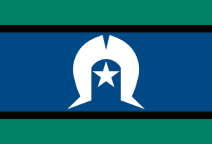Terminating an employee who has a workers’ compensation claim is a complex process, tightly regulated under Western Australian legislation.
Employers must understand their legal obligations – including holding a role open for 12 months and using prescribed termination forms – to avoid costly penalties and claim impacts. In this article we outline the key requirements and risks to help employers navigate terminations in compliance with the law.
Terminating the employment relationship

- The employee’s pre-injury position if it is reasonably practicable to do so
- An alternative position that the employee is qualified for and capable of performing and that is most comparable in status and pay to their pre-injury role.
If an employer does terminate the employment relationship within that 12-month timeframe, a penalty of $5,000 may apply.
Prescribed form to terminate
Where the employer terminates the employment relationship within the 12-month period, the employer must give 28 days' notice to the worker and WorkCover WA before the termination comes into effect. Notice is provided to the worker and WorkCover WA by completing the prescribed form.
Form 15G is available on the WorkCover website at workcover.wa.gov.au. If the employer terminates the employment relationship and fails to send the notice in the manner described, there is a penalty of $2,000.
The effect of termination on the workers’ compensation claim
Terminating the employment relationship of an employee with an active workers’ compensation claim is likely to affect the ongoing management of the claim. If the employee is not yet certified by the treating medical practitioner as fit for work, you will need to continue paying ongoing weekly compensation.
The employee will usually be entitled to the full rate of weekly compensation and not a rate that has been reduced because the employee was participating on a return-to-work program.
The insurer will be required to assume your role in returning the employee to work. The insurance company will do this by appointing an accredited vocational rehabilitation provider to find alternative duties outside your workplace. The cost of vocational rehabilitation and the time required to achieve a return-to-work outcome will vary depending on the nature of the injury, the stage of the recovery and other factors. These costs will be added to the cost of the claim and may affect your premium.
Interaction with other legislation
In addition to meeting the above obligations, employers must ensure they also comply with termination provisions under other applicable state or federal legislation. Such legislation includes but is not limited to:
- Fair Work Act 2009 (Cth) – unlawful termination and/or unfair dismissal
- Australian Human Rights Commission Act 1986 (Cth)
- Equal Opportunity Act 1984 (WA)
- Industrial Relations Act 1979 (WA) – unfair dismissal
How we can help
CCIWA’s Employment Relations Helpline provides free, unlimited advice to Members on HR, industrial relations and employee relations matters.
If you'd prefer to speak to one of our employment lawyers, please contact us at [email protected] or (08) 9365 7746.
Also, CCIWA's partner Epigroup has qualified workplace health and safety experts who provide cost-effective solutions to manage your WHS needs, reduce the risk to your workers and help you meet WA’s WHS laws. Email [email protected] or call 1300 414 313.












